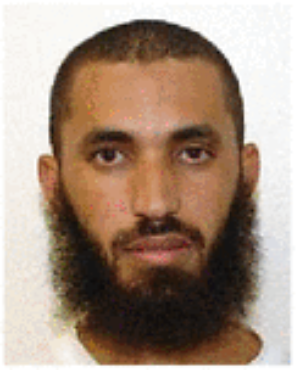Pentagon transfer Abdel Malik Ahmed Abdel Wahab Al Rahabi (#Yemen 1979) from Guantanamo Bay to #Montenegro.
The transfer of Abdel Malik Ahmed Abdel Wahab al-Rahabi leaves 79 detainees remaining at the U.S. naval base in Guantanamo. Al-Rahabi, 37, who was brought to Guantanamo in January 2002, had been accused of being a bodyguard for the late al Qaeda leader Osama bin Laden in Afghanistan, according to Pentagon documents. More from Reuters.
Related reading: al Qaeda, The Baltics, includes Montenegro
Related reading: Baltics, Montenegro and NATO
In part from LWJ: US officials repeatedly warned that Rahabi was a threat. Joint Task Force Guantanamo (JTF-GTMO), President Obama’s Guantanamo Review Task Force, and a Periodic Review Board (PRB) all deemed Rahabi too dangerous to transfer. Curiously, another PRB approved Rahabi’s transfer in late 2014, just months after the same body said his continued detention remained necessary to mitigate the threat he posed.
According to a leaked threat assessment, dated Apr. 28, 2008, Joint Task Force Guantanamo (JTF-GTMO) concluded Rahabi was a “high” risk who is “likely to pose a threat to the US, its interests, and allies.”
JTF-GTMO found that Rahabi was a bodyguard for Osama bin Laden and was also related to the al Qaeda founder by marriage.
Rahabi “swore bayat (oath of allegiance)” to Bin Laden and “received specialized close combat training for his role as a suicide operative in an aborted component” of the 9/11 hijackings, according to JTF-GTMO’s threat assessment.
US officials concluded that Rahabi was one of several al Qaeda members “designated as suicide operatives in a plot to hijack US air carriers traveling across Southeast Asia and destroy them in midair.” The hijackings were initially intended to coincide with al Qaeda’s attacks on the East Coast of the US, but bin Laden reportedly canceled them because he feared the two parts of the operation would be too difficult to synchronize.
JTF-GTMO’s analysts concluded that Rahabi “participated in hostilities against US and Coalition forces and was captured with a group referred to as the ‘Dirty 30,’ which included [bin Laden] bodyguards and “a jihadist “assessed” to be the would-be 20th hijacker on 9/11. The latter individual is Mohammed al Qahtani, who is still detained at Guantanamo. Qahtani was denied entry into the US in August 2001 and eventually returned to South Asia. Qahtani was captured by Pakistani forces in December 2001 as he and more than two dozen others, including Rahabi, attempted to flee the Battle of Tora Bora.
For these reasons and more, JTF-GTMO recommended that Rahabi be retained in US custody.
President Obama’s Guantanamo Review Task Force also determined that Rahabi was too dangerous to transfer.
The task force, which concluded its work in January 2010, recommended that Rahabi be held in “[c]ontinued detention pursuant to the [2001] Authorization for Use of Military Force.”
A Periodic Review Board (PRB) established by the Obama administration reevaluated Rahabi’s case in early 2014. The PRB determined on Mar. 5, 2014 that “continued law of war detention of” Rahabi remained “necessary to protect against a continuing significant threat to the security of the United States.”
That is, the PRB concluded that Rahabi was too much of a risk to transfer as well, just as JTF-GTMO and President Obama’s task force had before hand. [See LWJ report, Review board rules against Guantanamo detainee.]



